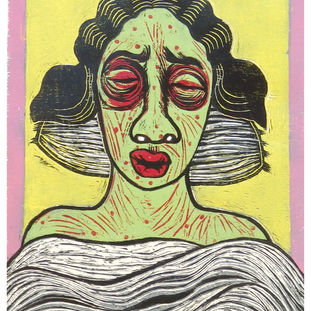
About the Artist
Portia Roy often think of herself as a stray dog on the streets of India, not really aiming to bring in any significant changes, but capable of disturbing the midnight slumber of at least few people. She barks through her art, which she call “Midnight Woof Woof”. Similar to a stray dog’s, insignificant yet impossible to ignore, she hopes her art can wake a few people up to the stories that demand to be seen and heard.
Growing up in a small town in Bengal during the communist era, where political conversations around the tea table were part of daily life. Her grandmothers’ stories of partition, escape, survival and resilience in the twilight years of her lives left a deep impression on her and shaped the way she understands the world. As a child, she spent nights reading books from her father’s collection: Dostoevsky, Gorky, Kafka, Rabindranath and the Hungry Generation poets of Bengal, which opened her eyes to different worlds and struggles.
Portia's childhood also carried shadows. She faced molestation repeatedly at a young age, and those experiences left deep marks. She realized early on that if she, with all her privileges, living in a safer bubble, could face such pain, the lives of women and girls in her country with less privilege must be unimaginably harder. This realization became the seed of her artistic practice, a way to process and protest the oppression she witnessed around her.
At Kala Bhavana, where she studied printmaking, she fell in love with relief printmaking. Woodcut with its bold and raw cuts became her chosen medium, but she felt constrained by its technical limitations.
Over time, she began blending wood engraving with the fluidity of painting, evolving a language uniquely her own. Her current work involves figurative compositions engraved and painted on plywood, creating vibrant, layered narratives that amplify marginalised voices and confront systemic injustices.
Her years spent in Chennai changed her in unexpected ways. Watching women draped in vibrant sarees, claiming space unapologetically, transformed how she use color. Today, her work celebrates these vibrant Indian hues, weaving them into stories of resilience and resistance.
Through her art, she want to provoke thought and spark conversations. Her practice continues to grow, but its roots remain in empathy and advocacy. It’s her way of amplifying voices
















